Tibetan Mastiff
Advertisements:
[The Tibetan Mastiff also known as Do-khyi (variously translated as [home guard], [door guard], [dog which may be tied], [dog which may be kept]), reflects its use as a guardian of herds, flocks, tents, villages, monasteries, and palaces, much as the old English ban-dog (also meaning tied dog) was a dog tied outside the home as a guardian. However, in nomad camps and in villages, the Do-khyi is traditionally allowed to run loose at night and woe be unto the stranger who walks abroad after dark.
Males can reach heights up to 31+ inches (80+cm) at the withers, although the standard for the breed is typically in the 25 to 28 inch (61 to 72 cm) range. The heaviest TM on record may be one weighing over 130 kg (286.6 Lbs) but dogs bred in the West are more typically between 140 lb (64 kg) to 180 lb (82 kg) — especially if they are in good condition and not overweight. The enormous dogs being produced in some Western and some Chinese kennels would have [cost] too much to keep fed to have been useful to nomads; and their questionable structure would have made them well-nigh useless as livestock guardians.
The Tibetan Mastiff is considered a primitive breed. It typically retains the instincts which would be required for it to survive in Tibet, including canine pack behaviour. In addition, it is one of the few primitive dog breeds that retains a single oestrus per year instead of two, even at much lower altitudes and in much more temperate climates than its native climate. This characteristic is also found in wild canids such as the wolf.
Its double coat is long, subject to climate, and found in a wide variety of colors, including solid black, black & tan, various shades of gold / [blonde], blue/gray, chocolate brown, red, the rarest being solid white. The coat of a Tibetan Mastiff lacks the unpleasant [big-dog smell] that affects many large breeds. The coat, whatever its length or color(s), should shed dirt and odors.
The native type of dog, which still exists in Tibet and the Himalayas (in Bhutan, Nepal, and North India), and the Westernized purebred breed can vary in temperament — but so can dogs of identical breeding, within the same litter, raised in the same household. Elizabeth Schuler states, [The few individuals that remain in Tibet are ferocious and aggressive, unpredictable in their behavior, and very difficult to train. But the dogs bred by the English are obedient and attached to their masters]. However, other observers have found the dogs remaining in Tibet to be quite approachable under the right circumstances — and some Western-bred dogs to be completely unapproachable.
Life Expectancy Unlike most large breeds, its life expectancy is long, some 10–14 years. The breed has fewer genetic health problems than many breeds]. – Wikipedia
Males can reach heights up to 31+ inches (80+cm) at the withers, although the standard for the breed is typically in the 25 to 28 inch (61 to 72 cm) range. The heaviest TM on record may be one weighing over 130 kg (286.6 Lbs) but dogs bred in the West are more typically between 140 lb (64 kg) to 180 lb (82 kg) — especially if they are in good condition and not overweight. The enormous dogs being produced in some Western and some Chinese kennels would have [cost] too much to keep fed to have been useful to nomads; and their questionable structure would have made them well-nigh useless as livestock guardians.
The Tibetan Mastiff is considered a primitive breed. It typically retains the instincts which would be required for it to survive in Tibet, including canine pack behaviour. In addition, it is one of the few primitive dog breeds that retains a single oestrus per year instead of two, even at much lower altitudes and in much more temperate climates than its native climate. This characteristic is also found in wild canids such as the wolf.
Its double coat is long, subject to climate, and found in a wide variety of colors, including solid black, black & tan, various shades of gold / [blonde], blue/gray, chocolate brown, red, the rarest being solid white. The coat of a Tibetan Mastiff lacks the unpleasant [big-dog smell] that affects many large breeds. The coat, whatever its length or color(s), should shed dirt and odors.
The native type of dog, which still exists in Tibet and the Himalayas (in Bhutan, Nepal, and North India), and the Westernized purebred breed can vary in temperament — but so can dogs of identical breeding, within the same litter, raised in the same household. Elizabeth Schuler states, [The few individuals that remain in Tibet are ferocious and aggressive, unpredictable in their behavior, and very difficult to train. But the dogs bred by the English are obedient and attached to their masters]. However, other observers have found the dogs remaining in Tibet to be quite approachable under the right circumstances — and some Western-bred dogs to be completely unapproachable.
Life Expectancy Unlike most large breeds, its life expectancy is long, some 10–14 years. The breed has fewer genetic health problems than many breeds]. – Wikipedia
A Tibetan Mastiff is displayed at a Tibetan Mastiff exposition on February 27, 2005 in Longfang, some 100 kilometers southeast of Beijing, China. The Tibetan Mastiff is a large breed of guard dog from the Himalayas. Bred to guard monasteries, villages, nomadic camps and livestock herds, it is very renowned for its loyalty and territorial nature. (Photo by Guang Niu/Getty Images)
A Tibetan Mastiff sits in its cage at Xining Purebred Tibetan Mastiff Breeding Base on April 15, 2006 in Xining of Qinghai Province, China. The breed, which originally lived in Tibetan Plateaus about 4,000 metres (13,120 feet) above sea level, is one of Chinas unique canine species and has a reputation of being one of the most defensive dogs in the world. Its famed for resolute character, great strength, ferocity and unruliness. In recent years, Tibetan mastiffs have become pets to many wealthy urban residents. (Photo by China Photos/Getty Images)
Workers walk Tibetan Mastiffs at a park near the Tibetan Mastiff exposition on April 7, 2007 in Langfang of Hebei Province, China. (Photo by China Photos/Getty Images)
A Tibetan Mastiff is displayed during the 2007 China All-Breed Dog Show and Training Contest on November 3, 2007 in Nanjing of Jiangsu Province, China. (Photo by China Photos/Getty Images)
An owner displays his Tibetan Mastiff during a Tibetan mastiff show on September 20, 2008 in Wuhan of Hubei Province, China. (Photo by China Photos/Getty Images)
Tibetan mastiffs are seen during the [China Northern 2011 Tibetan Mastiff Exposition] at Yutong International Sports Centre on February 16, 2011 in Shijiazhuang, Hebei province of China. The Tibetan Mastiff, also known as DoKhyi, is an ancient breed and a type of domestic dog originating with nomadic cultures in Central Asia. (Photo by ChinaFotoPress/Getty Images)
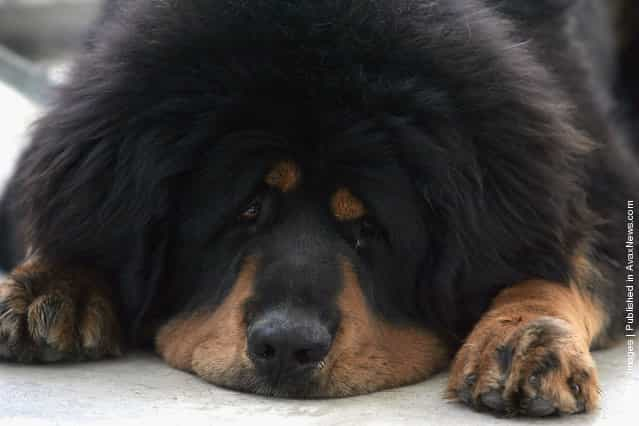
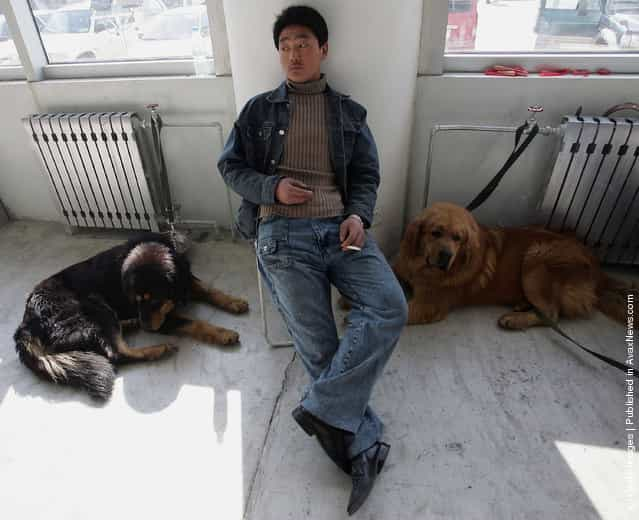
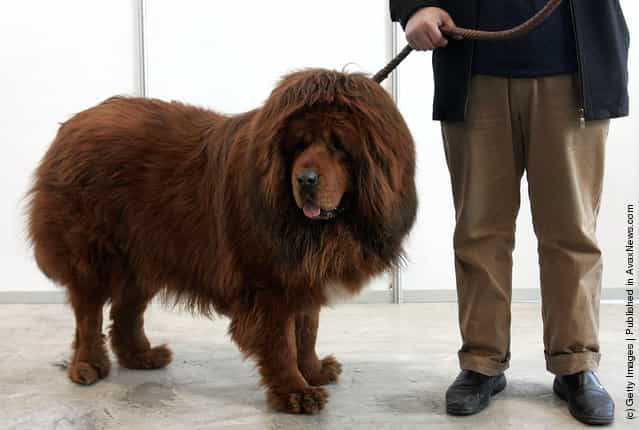

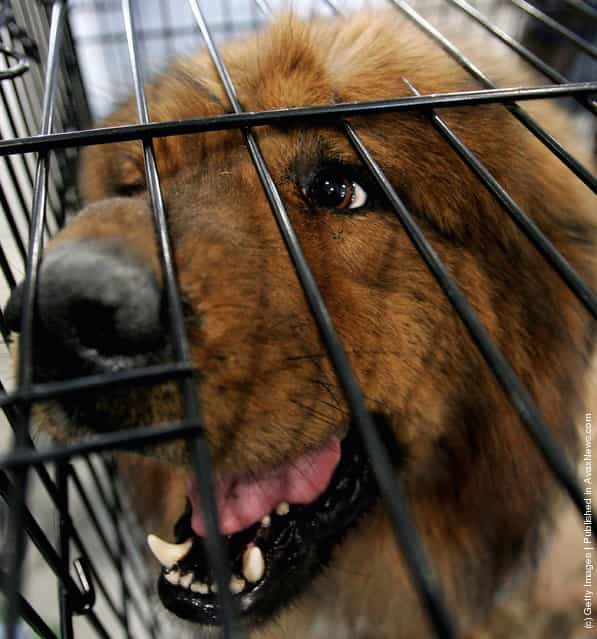
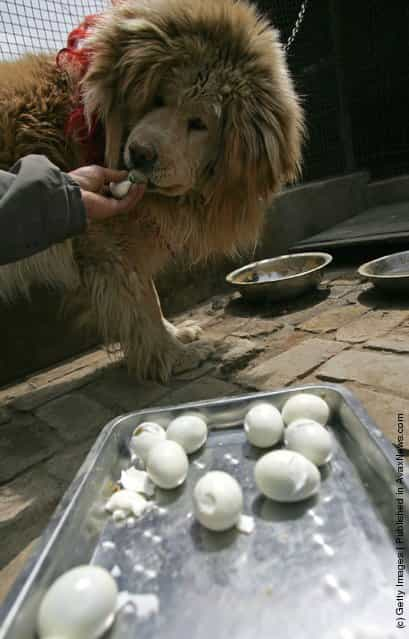
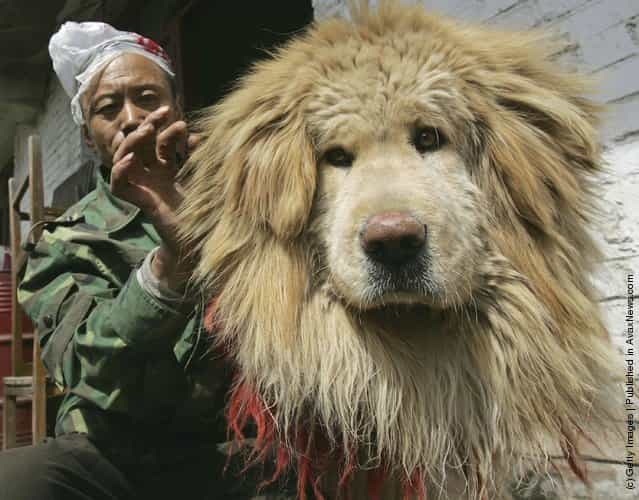
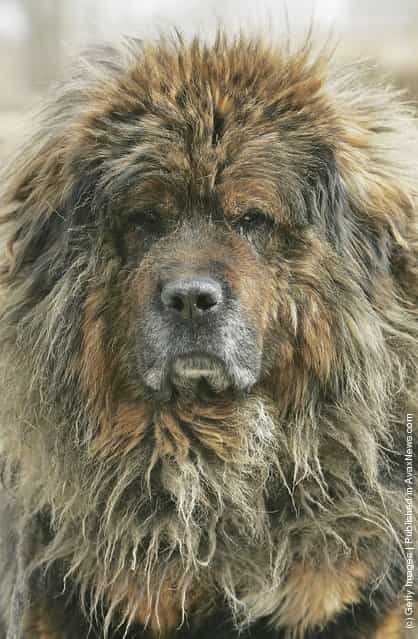
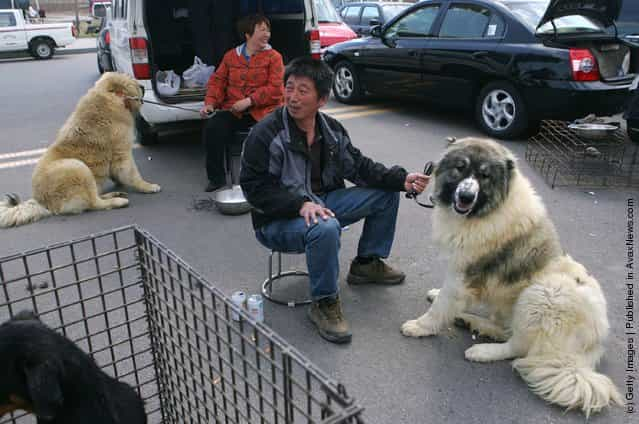
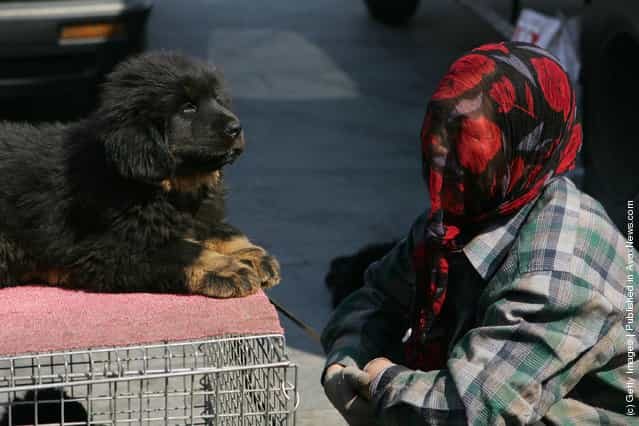
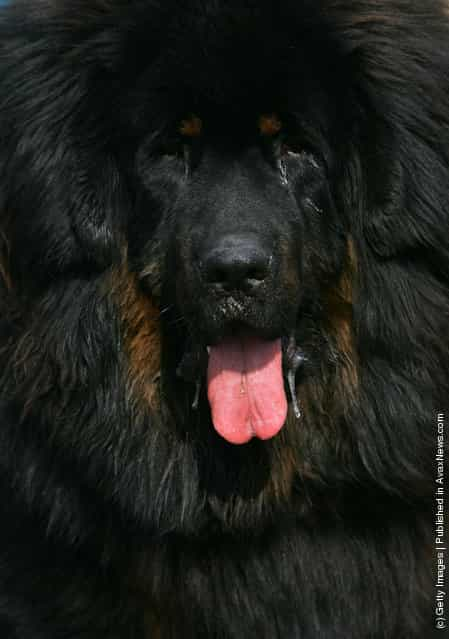
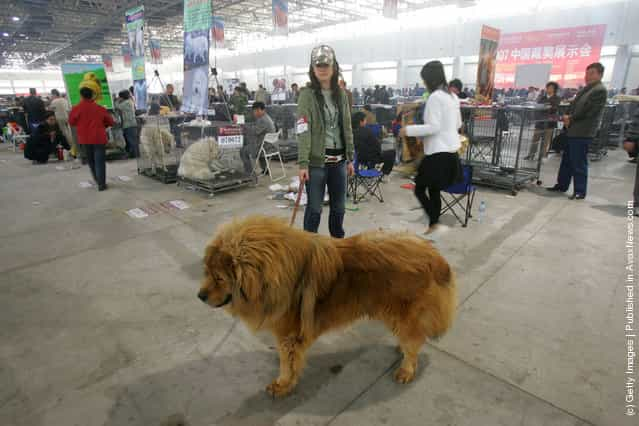
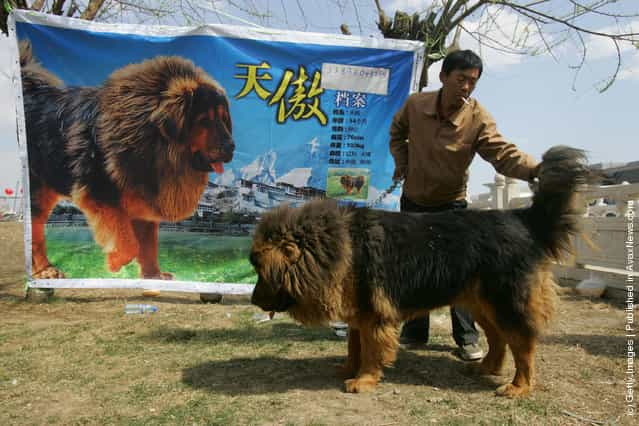
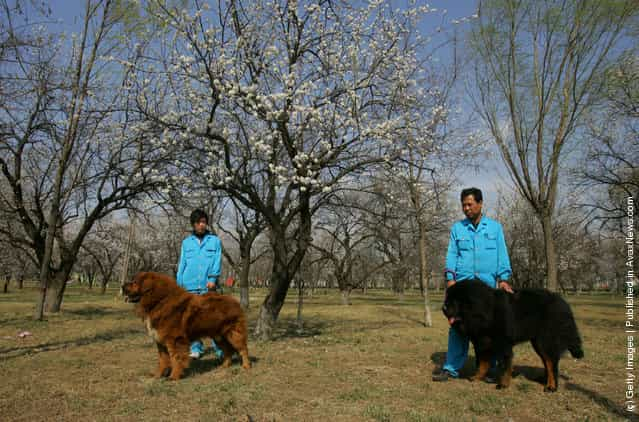

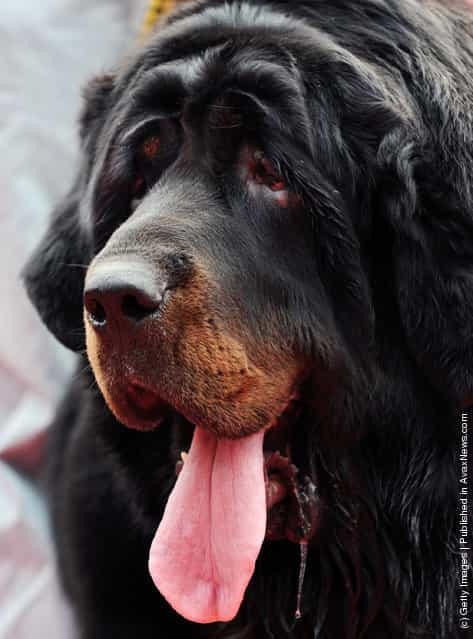

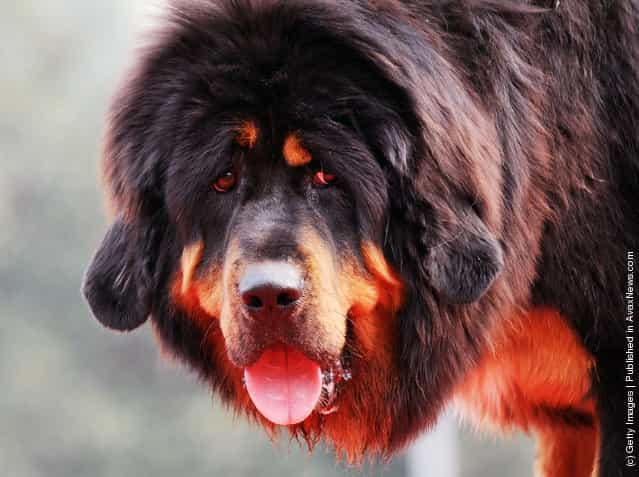
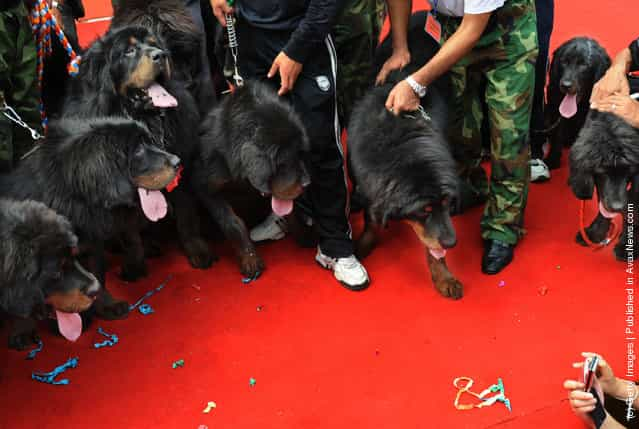
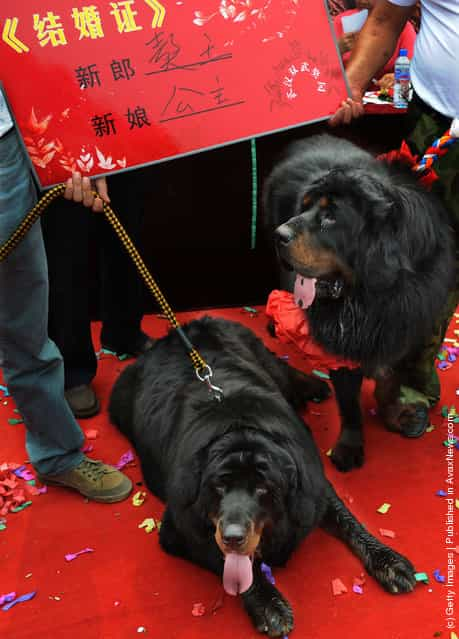
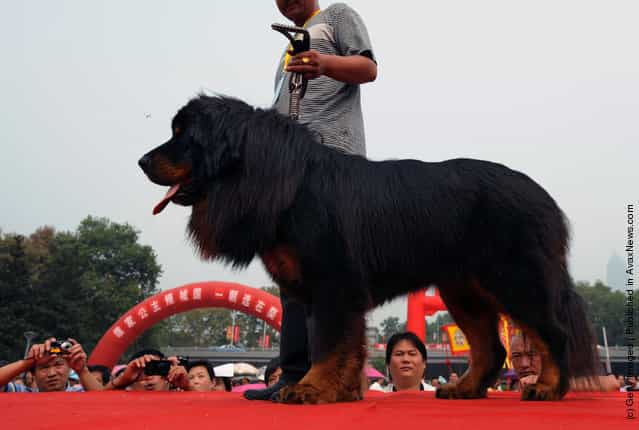
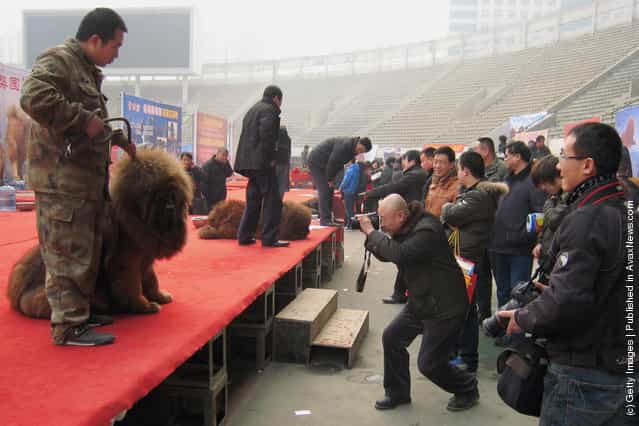
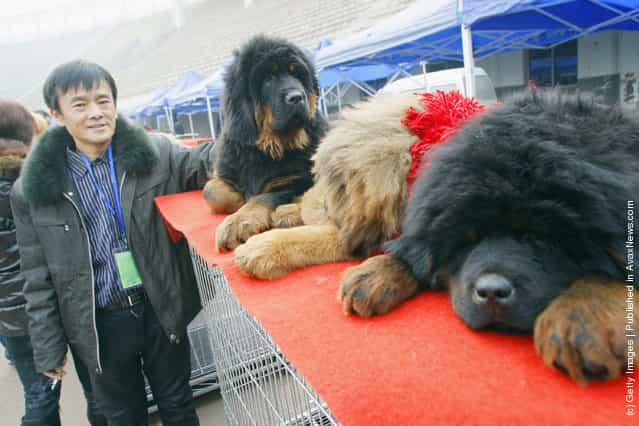
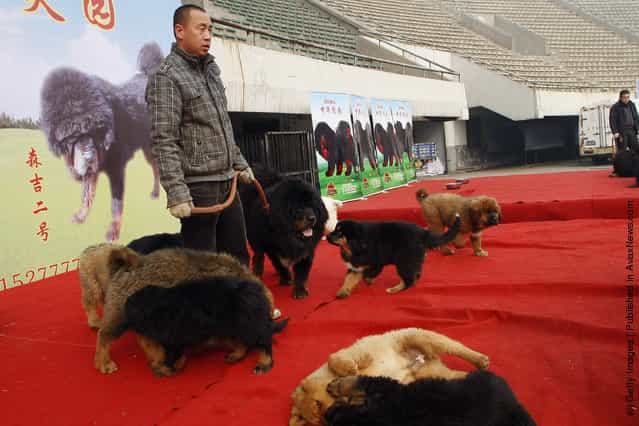

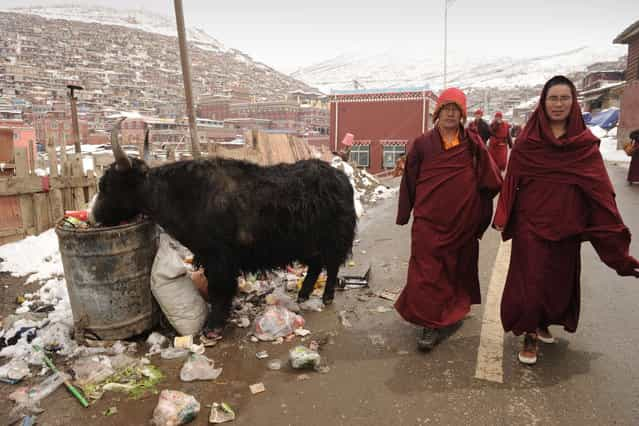



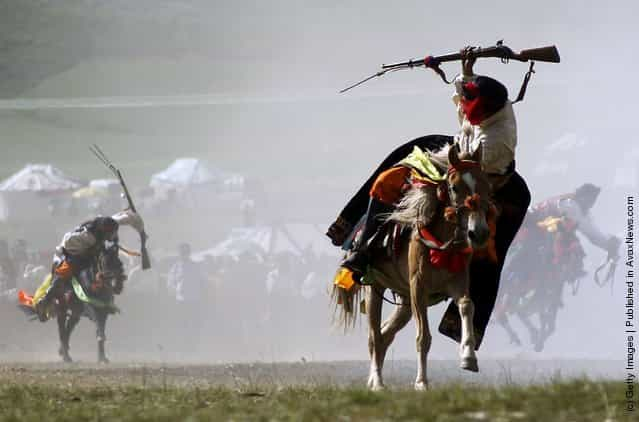
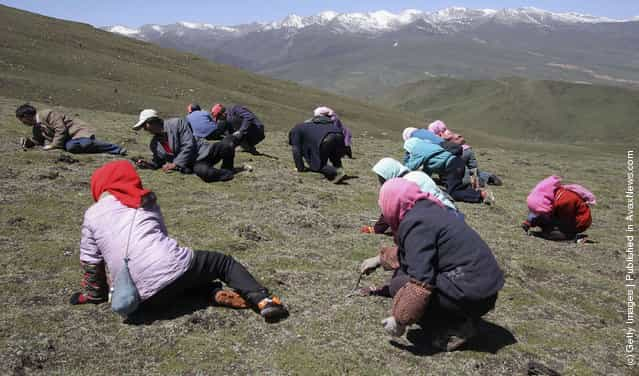
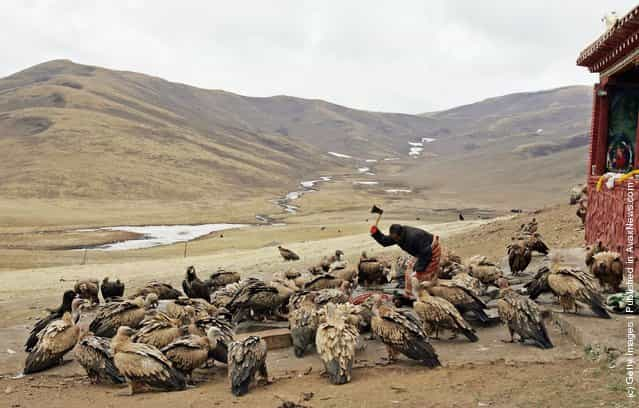


![Rare [Hybrid] Total Solar Eclipse Rare [Hybrid] Total Solar Eclipse](http://img.gagdaily.com/uploads/posts/fact/2013/short/00010c55_medium.jpg)






